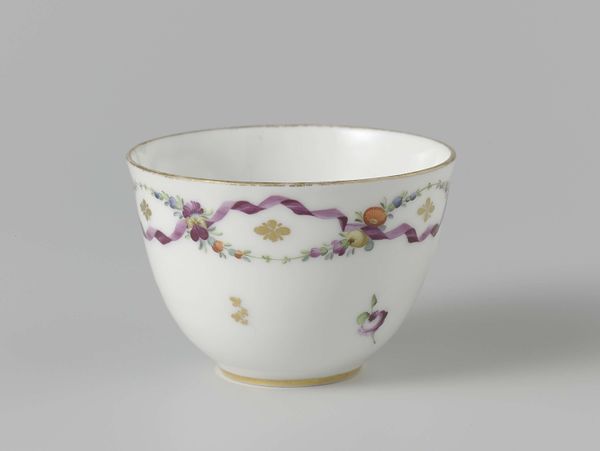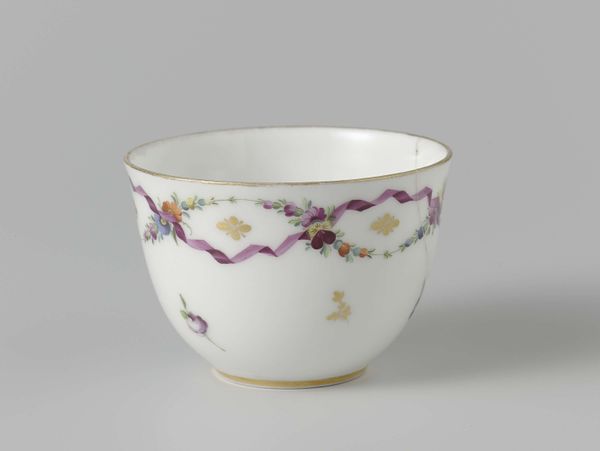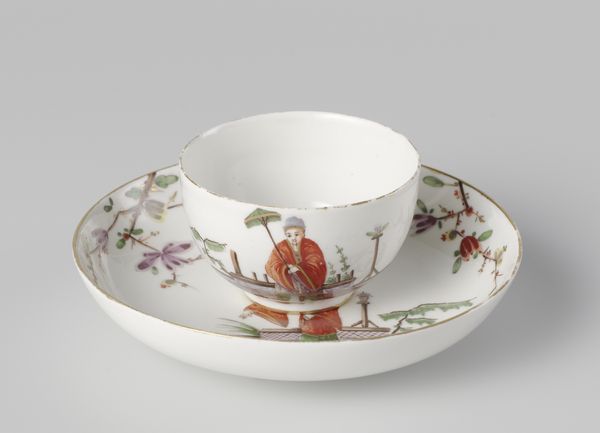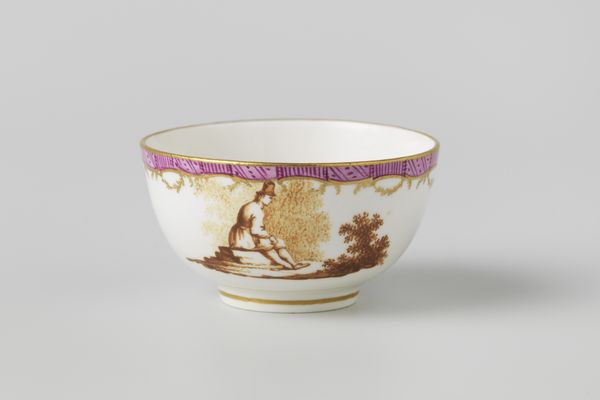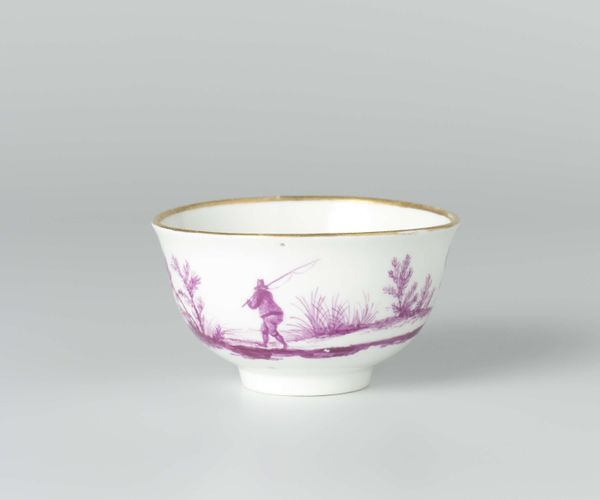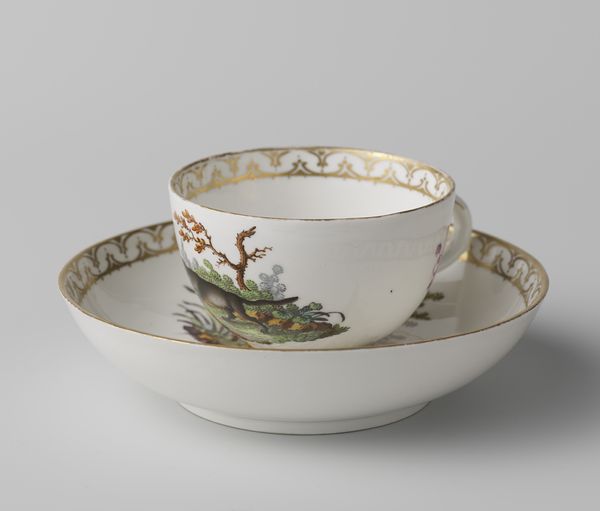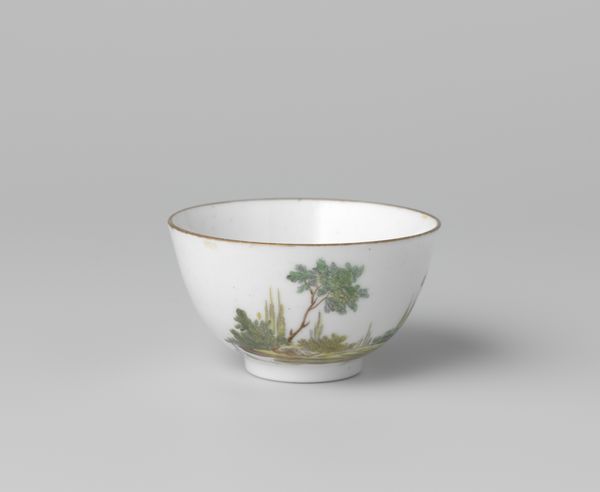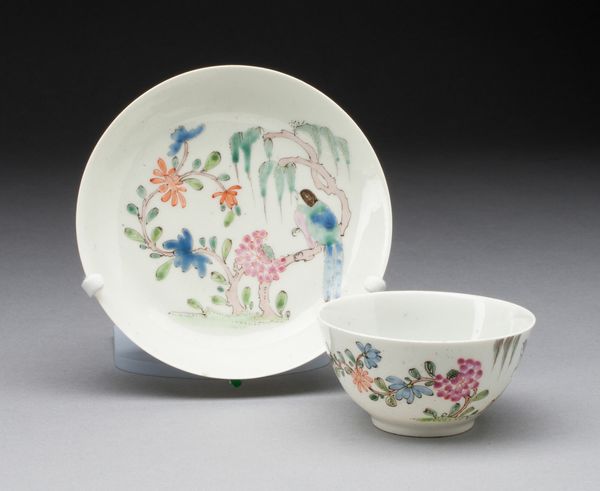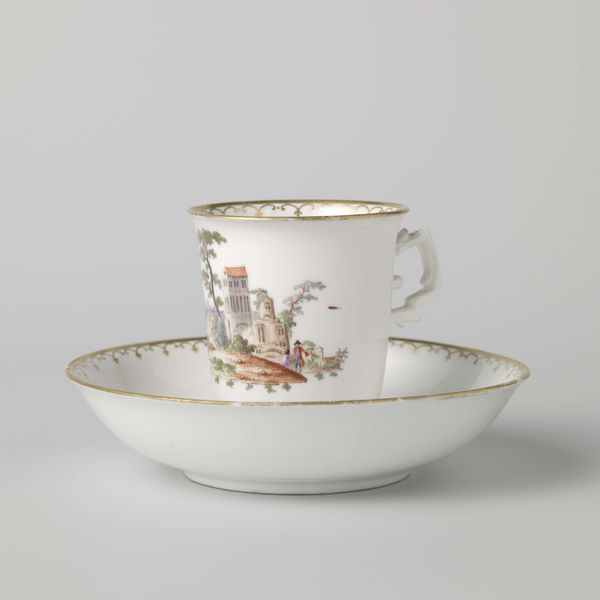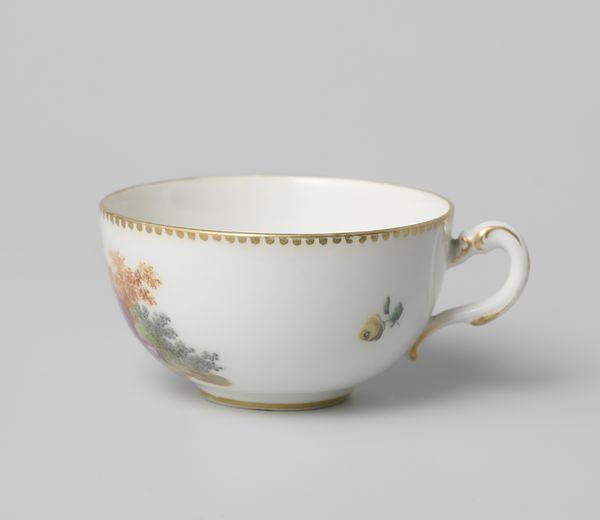
Kop zonder oor, veelkleurig beschilderd met chinoiserieën en losse bloemtakken langs de randen c. 1765 - 1770
0:00
0:00
painting, ceramic
#
painting
#
asian-art
#
ceramic
#
figuration
#
ceramic
#
miniature
#
rococo
Dimensions: height 5 cm, diameter 14 cm
Copyright: Rijks Museum: Open Domain
Curator: Here we have a charming example of 18th-century Dutch porcelain. It’s a teacup, created by the Weesper Porcelain Factory around 1765-1770. The object, which translates to "Cup without ear, multicolored painted with chinoiseries and loose flower branches along the edges”, features delicately painted scenes in the Chinoiserie style. Editor: It’s incredibly delicate. The colours, though faded with time, evoke a sense of gentle playfulness and leisure. There’s almost a bittersweet quality to it; that the remnants of the artwork's vibrancy feel more profound. It must have been an everyday object but decorated with these exotic, dreamlike scenes. Curator: Precisely! Chinoiserie was incredibly popular at the time. It was all about the European interpretation of Chinese and East Asian motifs. Here you see stylized figures and flora painted on the pristine white surface of the porcelain. The aesthetic provided a visual escape and sense of luxury. This aesthetic reveals how European powers like the Dutch, incorporated foreign, and in many cases, misrepresented styles in order to display power through access and consumption. Editor: That tension between fascination and misrepresentation is fascinating. Seeing this figure playing the flute or pipe while sitting amongst the reeds gives me the feeling that maybe this object reflects something far darker. In this miniature decorative style, aren’t other stories obscured? Consider the raw materials; labour practices, and trade imbalances inherent to these kinds of luxuries. It feels important not to only interpret this work as the display of an aesthetic preference. Curator: Yes, you raise a critical point about the broader context. Porcelain production at the time was intrinsically linked to global trade networks, to colonization, and yes, often exploitative labor practices. The cup serves as an appealing artwork. At the same time it provides us an opportunity to recognize an artistic industry built on shifting power dynamics between Europe and Asia. Editor: It makes you question the value we assign to certain aesthetics. Are we drawn to its perceived elegance without accounting for what these materials or production actually cost? Curator: Food for thought, definitely. But regardless, it is an evocative piece. The soft curve, the whimsical scenes, there’s a timelessness. Editor: Absolutely, a portal into multiple worlds and layered meanings, making us question what it really means to be a connoisseur, then and now.
Comments
No comments
Be the first to comment and join the conversation on the ultimate creative platform.
